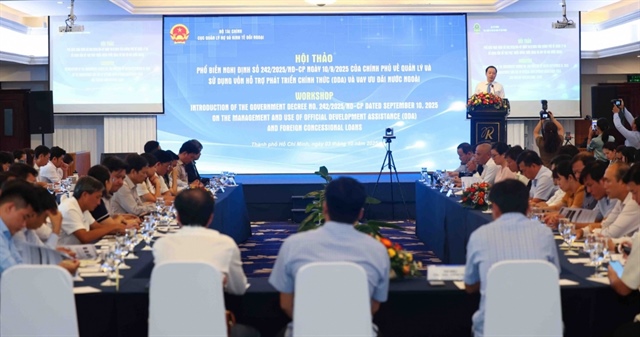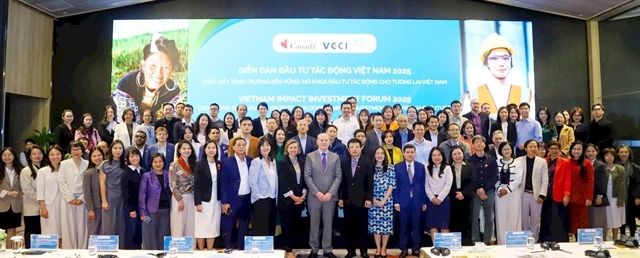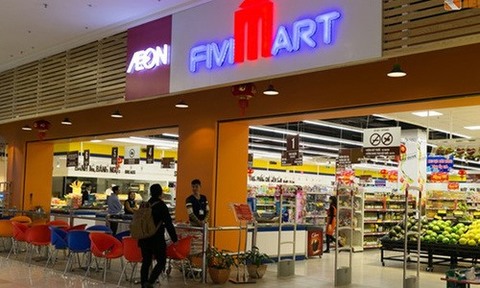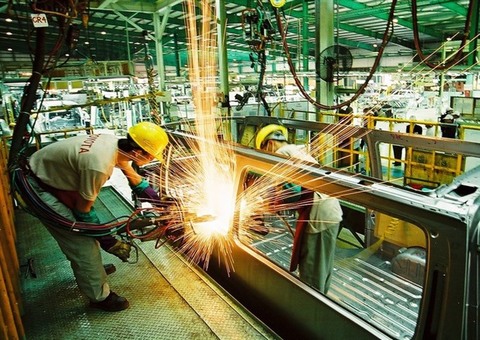Seizing gains from paused trade war
Seizing gains from paused trade war
With the United States and China applying a trade war truce for 90 days, Vietnam could still be impacted by the knock-on effects of the trade diversion. What can the country do to shun any adverse consequences and grab opportunities resulting from the international trade tariff stand-off?
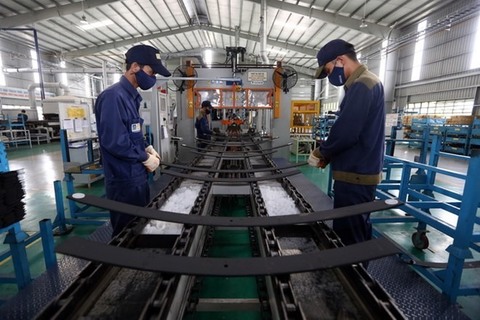
Early last week during the G20 meeting in Argentina’s Buenos Aires, US President Donald Trump and Chinese counterpart Xi Jinping agreed to a 90-day ceasefire in their trade dispute, with a view to reaching a trade agreement.
According to the White House, President Trump agreed that on January 1, 2019, he will leave tariffs on $200 billion worth of products at the 10 per cent rate, and not raise it to 25 per cent as originally intended.
“China will agree to purchase a not yet agreed upon, but very substantial, amount of agricultural, energy, industrial, and other products from the United States to reduce the trade imbalance between our two countries,” said a Washington press release.
However, the White House also warned, “If at the end of this period of time, the parties are unable to reach an agreement, the 10 per cent tariffs will be raised to 25 per cent.”
OPPORTUNITIES IN THE US
Chief economist of the World Bank’s East Asia-Pacific region, Sudhir Shetty, said at last week’s forum on Vietnam’s international economic integration that despite the trade war truce, nothing can be assured that the Trump administration will not raise tariffs on Chinese imports. Shetty also insisted that in every scenario, Vietnam will be significantly impacted by the dispute.
“As a highly open economy and major trading partner of both the US and China, Vietnam will be affected but these impacts should be manageable,” Shetty said. “Trade diversion could lead to Vietnamese exports replacing some Chinese exports to the US, and to a lesser extent, US exports to China. Vietnam has the potential to replace $19 billion of Chinese exports to the US (see chart).”
One of Vietnam’s key sectors benefiting from the trade war is the agro-forestry-aquatic sector. The infliction of duelling tariff barriers between the two major powers will prompt US businesses to seek more foreign partners to purchase these products, and prompt Chinese companies to expand their goods to other markets, including Vietnam.
Dang Duc Anh, head of the Department of Analysis and Forecast under the National Centre for Socioeconomic Information and Forecast, told VIR that while Chinese businesses will not be able to boost their agro-forestry-aquatic products to the US due to new high tariffs, Vietnamese exporters can seize this opportunity to boost the export of these products into the US.
Currently, the items most imported by the US from China are agro-forestry-aquatic products, at a share of 70 per cent. Thus, the high tariffs from the US will limit these Chinese products. Meanwhile, the majority of Vietnamese goods exported to the US are also agro-forestry-aquatic items.
Last year, Vietnam earned an export turnover of $41.6 billion from the US, which accounted for 19.4 per cent of its total export turnover. $6.9 billion of this was from agro-forestry-aquatic exports, including wooden products ($47.3 per cent), aquatic products (20.3 per cent), and cashew nuts (17.7 per cent), according to the General Statistics Office (GSO).
In the first 11 months of 2018, the US spent $43.7 billion importing Vietnamese goods, up 15 per cent on-year, including $7 billion worth of agro-forestry-aquatic products, up 8 per cent on-year.
Nguyen Ton Quyen, vice chairman of the Timber and Forest Product Association of Vietnam, told VIR that wider doors to the US will be opened by the trade dispute – which currently imports 43 per cent of Vietnam’s total wooden exports. In the first 10 months of this year, US wooden imports from Vietnam increased by 15.8 per cent on-year.
“Currently, China is the largest wooden product supplier of the US. The trade war means that Chinese products will have fewer opportunities in the US. Meanwhile, Vietnamese exporters can now meet all US standards, and they will find opportunities to boost exports to the US,” Quyen said.
POTENTIAL RISKS
Deputy Minister of Industry and Trade Do Thang Hai cited several international studies stating that the US-China trade war can reduce global trade growth, regardless of any scenarios. “If Vietnam fails to have a flexible response policy, it can face an economic decline,” Hai said.
Vietnam will likely have to face impacts caused by trade diversion from the stand-off. It will be tough to handle as cross-border e-commerce is more popular, with cyberattack risks. “Some investors can relocate their factories from China to Vietnam. Then it will be very difficult to select these projects economically, socially, and environmentally,” he said.
According to the Ministry of Planning and Investment, in the first 11 months of 2018, China remained Vietnam’s fifth-largest foreign investor, with 335 projects registered at $893 million. If stake acquisitions and increased operational project capital are taken into account, total Chinese newly-registered schemes amounted to $1.8 billion.
As of November 20, 2018, China had 2,102 projects registered at $13.06 billion in Vietnam, making it the seventh-largest foreign investor.
According to an expert from the Inter-agency Steering Committee for International Economic Integration, the US aims to impose high tariffs on China’s industrial products which will then enter Vietnam instead of the US because of geographical proximity at cheaper prices – one of China’s biggest advantages.
The GSO reported that in the first 11 months of this year, Vietnam suffered from a $21.6 billion trade deficit with China, which largely came from industrial product imports. Vietnam spent $59.7 billion purchasing Chinese goods, up 13 per cent on-year.
China remained the largest goods supplier of Vietnam last year, with the latter spending $52.5 billion importing goods – accounting for 27.58 per cent of Vietnam’s total import turnover, with machinery and equipment ($10.9 billion), mobile phone and spare parts ($8.75 billion), computers and spare parts ($7 billion), clothes ($6 billion), and steel ($4 billion).
“The prolonged trade war may also prompt other nations to apply protectionism, which can make it hard for Vietnam’s exports in these nations due to trade barriers,” Hai added.
“Vietnam will likely be affected adversely by the slowdown in global trade and growth that result from higher uncertainty,” said Shetty of the World Bank.
SOLUTIONS
Prime Minister Nguyen Xuan Phuc recently said that the trade tensions will surely affect Vietnam and “We are seeking new ways to develop.”
According to the prime minister, it is important for Vietnam to maintain macroeconomic stability, expands exports and improves the livelihood of the people. To that end, Vietnam will continue seeking more free trade agreements.
“We have to rely on our own strength to weather all difficulties and maintain growth,” PM Phuc said.
Meanwhile, Shetty suggested some options for Vietnam in the face of these tensions. “Vietnam needs to continue strengthening macroeconomic resilience, maintain exchange rate flexibility, address financial sector vulnerabilities, build fiscal buffers, and ensure debt sustainability,” he said.
According to Shetty it is quite necessary for Vietnam to enhance competitiveness, strengthen trade facilitation, improve the business environment, level the playing field between foreign and domestic businesses, and between state-owned enterprises and private ones, and strengthen links between foreign-invested enterprises and local suppliers.
“Of no less importance, Vietnam must deepen trade and investment reform, address non-tariff distortions to trade, deepen services reform, accelerate and deepen regional and global integration, and redouble commitments to a rules-based global and regional trading system,” Shetty said.





